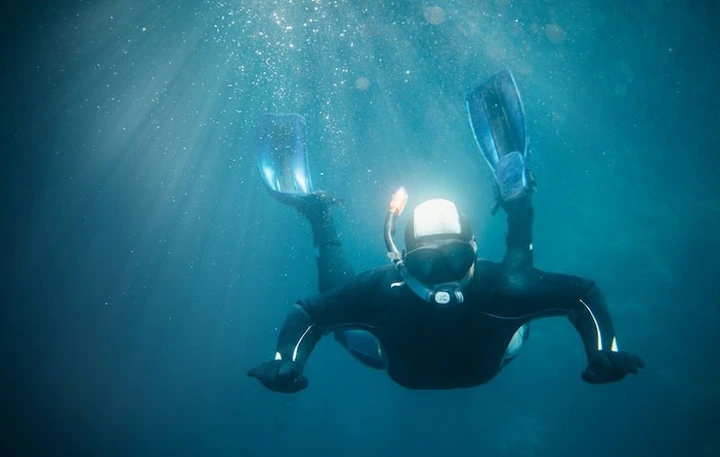
View pictures in App save up to 80% data.
The ocean represents one of the final vast frontiers on our planet, encompassing over 70% of its surface while still being mostly uncharted. Autonomous underwater vehicles (AUVs) are revolutionizing exploration by delving into the depths without the need for human operators.
These autonomous underwater vehicles (AUVs) are employed for tasks such as mapping the ocean floor, investigating marine ecosystems, and even locating shipwrecks or valuable minerals. With advancements in artificial intelligence (AI), these robotic submarines are evolving to become increasingly intelligent and proficient.
AUVs function in demanding conditions where direct human oversight is often unfeasible. The ocean is expansive, dimly lit, and rife with unpredictable currents. Conventional AUVs depended on preset commands, limiting their ability to adjust to unforeseen circumstances.
Artificial intelligence is transforming this field by enabling autonomous underwater vehicles (AUVs) to independently make decisions, adapt, and react to their surroundings in real time.
An intriguing advancement has emerged from MIT researchers, who have developed AI systems for Autonomous Underwater Vehicles (AUVs) that leverage machine learning to assess their environments and modify their operational objectives accordingly.
For instance, an AUV used for mapping coral reefs is now capable of identifying significant areas, like thriving or compromised coral, allowing it to concentrate its data collection efforts in those locations. This approach optimizes both time and energy, resulting in more valuable insights.
AI enhances navigation capabilities significantly. When it comes to underwater environments, GPS is ineffective as satellite signals cannot reach through water. To determine their location, Autonomous Underwater Vehicles (AUVs) rely on various sensors, including sonar and cameras.
Artificial intelligence aids in analyzing this data to produce precise representations of the ocean floor. In a particular research project, a group of scientists employed AI to instruct autonomous underwater vehicles (AUVs) on how to navigate around obstacles such as rocks and submerged structures, enabling them to safely investigate more intricate environments.
A significant advancement has been made in swarm intelligence, which involves multiple AUVs collaborating as a cohesive unit. Drawing inspiration from the behavior of fish schools, scientists are creating AI algorithms that enable these AUV groups to synchronize their actions autonomously, without the need for human oversight.
These swarms have the capability to efficiently cover extensive regions, making them ideal for tasks like detecting oil spills or overseeing marine ecosystems. An illustrative case is the European Union's initiative known as “SwarmDiver,” which showcased how compact and lightweight autonomous underwater vehicles (AUVs) can collaborate to monitor underwater pollution levels or fluctuations in water temperature.
AI is enhancing the way we collect and analyze data. Underwater ecosystems generate vast quantities of information, including video recordings and chemical assessments. Conducting a manual analysis of this data can require several months.
Thanks to AI, Autonomous Underwater Vehicles (AUVs) can analyze data in real-time, allowing them to detect significant patterns or irregularities. This capability is especially beneficial in fields such as underwater archaeology, where AI aids in discovering artifacts or shipwrecks through the examination of sonar imagery.
In marine science, autonomous underwater vehicles (AUVs) equipped with artificial intelligence are assisting scientists in tracking climate change. These advanced robots gather essential data regarding water temperature, salinity, and current patterns, offering vital information on the evolving state of the oceans.
They have also been utilized to monitor fish population migrations, investigate deep-sea hydrothermal vents, and study the behaviors of rare marine species.
Nonetheless, challenges persist. AUVs must function for extended durations without surfacing, leading to ongoing constraints related to battery longevity. Additionally, AI algorithms depend on consistent data to make informed decisions; however, underwater environments—characterized by murky visibility or powerful currents—can disrupt sensor accuracy.
Moreover, keeping in touch with AUVs poses challenges since radio waves do not propagate effectively beneath the water's surface, while acoustic signals tend to have slower transmission rates.
In spite of these challenges, the capabilities of AI-driven AUVs are vast. They are making significant contributions to scientific research while also aiding sectors such as offshore energy and maritime security. For example, AUVs can conduct inspections of underwater pipelines or oversee ports for potential threats, undertaking tasks that would be too perilous or costly for human operators.
Artificial intelligence is revolutionizing our exploration and comprehension of the oceanic realm. These intelligent machines are paving the way for new avenues of discovery, ranging from safeguarding marine environments to uncovering resources hidden in the depths of the sea. As innovation progresses, they might even assist in unraveling some of the ocean's most profound enigmas.
The prospects for underwater exploration are promising, and with artificial intelligence at the forefront, we are nearing the revelation of the mysteries that lie beneath the waves.